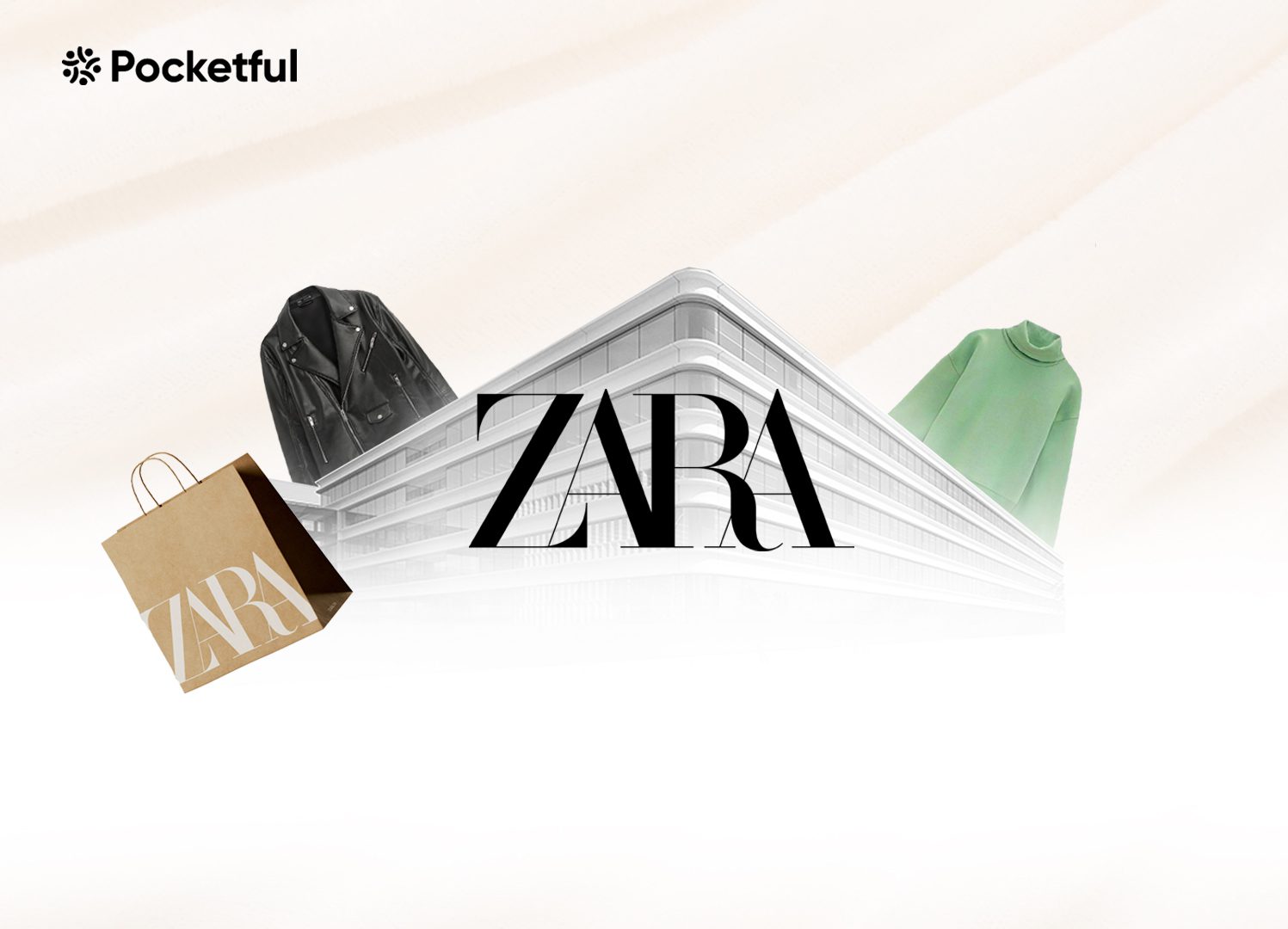| Type | Description | Contributor | Date |
|---|---|---|---|
| Post created | Pocketful Team | Oct-03-24 |

- Blog
- zara case study
Zara Case Study: Business Model and Pricing Strategies

Clothing is more than just fabric but is also a form of expression. Stylish clothing is necessary if you want to appear and express yourselves well at both parties and meetings. There are many different fashion labels on the market, and “Zara” is one of them.
In this blog, we will provide an overview of Zara, including their pricing strategy and business approach.
Zara – An Overview

Amancio Ortega and Rosalia Mera launched the business in Spain in 1975. The company was originally named Zorba and was later renamed Zara. Initially, the company sold fashion clothes at lower prices, similar to the designs of high-end fashion brands. Later, in 1980, the company expanded rapidly in Spain and became a well-known name in the fashion industry. The company efficiently manages its supply chain by manufacturing clothes in small batches, which helps in saving inventory costs. In 1988, the company expanded operations outside Spain and opened its first branch in Portugal. In 1990, the business opened several stores in cities like Tokyo, New York, and Paris. In 2001, Zara’s parent company, Inditex, went public and was listed on the Spanish Stock Exchange. Amancio Ortega, the founder, rose to prominence and became one of the richest persons in the world after the IPO. The company began operating its online store in 2010 to take advantage of e-commerce technology. The company launched the “Join Life” campaign, which reflects the company’s promise to utilize only sustainable fabrics by 2025 and use only eco-friendly materials.
Read Also: Amazon Case Study: Marketing Strategy, Product Portfolio and Pricing Strategy
Business Model of Zara
Zara has a fashion-centric business model, and the company changes it according to market trends. The main components of Zara’s business model are as follows-
- Supply Chain – The business guarantees that the product reaches the consumer on time because the company has an integrated supply chain, which includes distributors located all over the world.
- Product Upgrade – The company reacts to the shifting fashion trends by launching new products in two to three weeks.
- Designing of Products – With more than 700 internal designers, the organization produces more than 10,000 designs a year.
- Production Policy – Due to the company’s restricted production of the dresses, a high turnover ratio is guaranteed as limited supply creates urgency among customers.
- Product Policy – The corporation doesn’t manufacture in large quantities, which allows it to increase production if a new product succeeds and restrict output if a product fails.
- Customer Satisfaction – The company requests feedback from customers regularly to enhance the quality of its products. Additionally, the company’s stores must submit daily sales reports to the company’s headquarters.
- Limited Advertising – The company opens its store in prime locations in the city, relies heavily on word-of-mouth advertising, and spends very little on product advertising.
- E-Commerce – The company has invested in developing its e-commerce platforms to further expand its operations in regions where Zara’s physical stores are not present.
Read also: Nike Case Study: Business Model & Marketing Strategy
Pricing Strategies of Zara
A company’s pricing strategy is an essential component of its business model, especially if it is associated with the fashion industry, which can be extremely competitive. Zara’s pricing strategy is mentioned below:
- Affordability – The company’s premium goods are accessible to the general public while still giving their customers a feeling of exclusivity due to restricted production.
- Market Pricing – The company adjusts the product’s price according to the nations it operates in. For instance, in developed countries, prices are often higher than in developing countries.
- Limited Discounts – Zara only offers discounts after the conclusion of a specific season to clear out their inventory. In general, they do not offer frequent discounts in their stores.
- Cost Efficient – Zara has control over the production process, which allows them to reduce costs and increase their profit margins.
Conclusion
Zara is an excellent example of how a regional fashion brand can become one of the world’s leading fashion brands through integrated operations, innovative designs, and effective pricing strategies. The company’s strategy to manufacture products in small batches generates urgency among customers and helps it maintain its exclusive image. The company’s commitment to sustainability and the use of eco-friendly materials will be beneficial to the environment and will also help the brand attract new customers.
Frequently Asked Questions (FAQs)
Who founded Zara?
Amancio Ortega and Rosalia Mera founded Zara in 1975.
Is Zara an Indian company?
Zara is a global fashion brand that is owned by the Spanish fashion company Inditex. Tata’s Trent formed a joint venture with Inditex to run Zara stores in India.
When did Zara start their operation in India?
Zara began operations in India in May 2010 when it opened its first location in New Delhi.
Which company owns Zara?
Inditex is a Spanish company that owns Zara.
Who are Zara’s biggest competitors in India?
Zara’s biggest competitors in India include H&M, Reliance Trends, Zudio, GAP, Vero Moda, Marks and Spencer, etc.
Disclaimer
The securities, funds, and strategies discussed in this blog are provided for informational purposes only. They do not represent endorsements or recommendations. Investors should conduct their own research and seek professional advice before making any investment decisions.